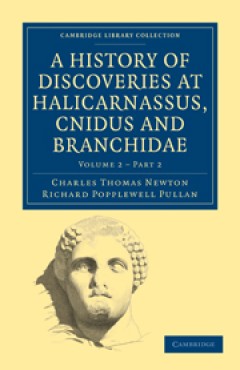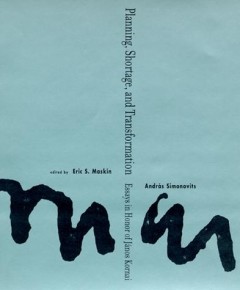Filter by

A History of Discoveries at Halicarnassus, Cnidus and Branchidae
Charles Thomas Newton (1816–1894) was a British archaeologist specialising in Greek and Roman artefacts. He studied at Christ Church, Oxford before joining the British Museum. Newton left the Museum in 1852 to explore the coast of Asia Minor, and in 1856 he discovered the remains of the Mausoleum of Halicarnassus, one of the seven ancient wonders of the world. This study, first published in 1…
- Edition
- -
- ISBN/ISSN
- 9780511910302
- Collation
- -
- Series Title
- Cambridge Library Collection - Archaeology
- Call Number
- -

A History of Discoveries at Halicarnassus, Cnidus and Branchidae
Charles Thomas Newton (1816–1894) was a British archaeologist specialising in Greek and Roman artefacts. He studied at Christ Church, Oxford before joining the British Museum. Newton left the Museum in 1852 to explore the coast of Asia Minor, and in 1856 he discovered the remains of the Mausoleum of Halicarnassus, one of the seven ancient wonders of the world. This study, first published in 1…
- Edition
- -
- ISBN/ISSN
- 9780511910296
- Collation
- -
- Series Title
- Cambridge Library Collection - Archaeology
- Call Number
- -

Building genetic medicine :breast cancer, technology, and the comparative pol…
A comparative study of genetic testing for breast and ovarian cancer in the United States and Britain that shows the importance of national context in the development and use of science and technology even in an era of globalization.OCLC-licensed vendor bibliographic record.
- Edition
- -
- ISBN/ISSN
- 9780262281287
- Collation
- 1 online resource (x, 271 pages) :illustrations.
- Series Title
- -
- Call Number
- -

Planning, shortage, and transformation :essays in honor of J?anos Kornai
The three major themes of János Kornai's work reflected in the title of this book—planning, shortage, and transition, or transformation—figure prominently in the essays. The three major themes of János Kornai's work reflected in the title of this book—planning, shortage, and transition, or transformation—figure prominently in the essays. After a philosophical introduction by Edmond…
- Edition
- -
- ISBN/ISSN
- 9780262279222
- Collation
- 1 online resource (xvii, 439 pages) :illustrations
- Series Title
- -
- Call Number
- -

Drugs and the FDA :a story of tragedy, effectiveness, and safety
"The tension between the drugs patients need & what is necessary to demonstrate safety & efficacy; a story of hope in justifiably desperate patients vs. the time it takes to prove drugs actually work"--OCLC-licensed vendor bibliographic record.
- Edition
- -
- ISBN/ISSN
- 9780262371322
- Collation
- 1 online resource.
- Series Title
- -
- Call Number
- -

Red Prometheus: engineering and dictatorship in East Germany, 1945-1990
This analysis of the relationship between science and totalitarian rule in one of the most technically advanced countries in the East bloc examines professional autonomy under dictatorship and the place of technology in Communist ideology. In Cold War-era East Germany, the German tradition of science-based technology merged with a socialist system that made technological progress central to its…
- Edition
- -
- ISBN/ISSN
- 9780262267458
- Collation
- 1 online resource (xxx, 381 pages, 4 unnumbered pages of plates) :illustrations (some color).
- Series Title
- -
- Call Number
- -

Survey of architectural history in Cambridge.
Cambridge, Massachusetts is a rich mixture of closely mingled examples of architectural periods; 17th, 18th, 19th, and 20th century, with the 21st century already near the drawing board and before the planning board. Yet implicit in the city is a continuity overruling what might be chaos. The Cambridge Historical Commission was established not to piously preserve a static past, but to make mani…
- Edition
- Revised edition.
- ISBN/ISSN
- 9780262368032
- Collation
- 1 online resource (volumes <1->) :illustrations, maps.
- Series Title
- -
- Call Number
- -

Comrades no more :the seeds of political change in Eastern Europe
In 1989, Soviet control over Eastern Europe ended when the communist regimes of the Warsaw Pact collapsed. These momentous and largely bloodless events set the stage for the end of the Cold War and ushered in a new era in international politics. Why did communism collapse relatively peacefully in Eastern Europe? Why did these changes occur in 1989, after more than four decades of communist rule…
- Edition
- -
- ISBN/ISSN
- 9780262271349
- Collation
- 1 online resource (x, 305 pages) :1 map.
- Series Title
- -
- Call Number
- -

Survey of architectural history in Cambridge.
OCLC-licensed vendor bibliographic record.
- Edition
- Revised edition.
- ISBN/ISSN
- 9780262367929
- Collation
- 1 online resource :illustrations, maps.
- Series Title
- -
- Call Number
- -

Survey of architectural history in Cambridge.
OCLC-licensed vendor bibliographic record.
- Edition
- Revised edition.
- ISBN/ISSN
- 9780262367905
- Collation
- 1 online resource (volumes <1->) :illustrations, maps.
- Series Title
- -
- Call Number
- -
 Computer Science, Information & General Works
Computer Science, Information & General Works  Philosophy & Psychology
Philosophy & Psychology  Religion
Religion  Social Sciences
Social Sciences  Language
Language  Pure Science
Pure Science  Applied Sciences
Applied Sciences  Art & Recreation
Art & Recreation  Literature
Literature  History & Geography
History & Geography